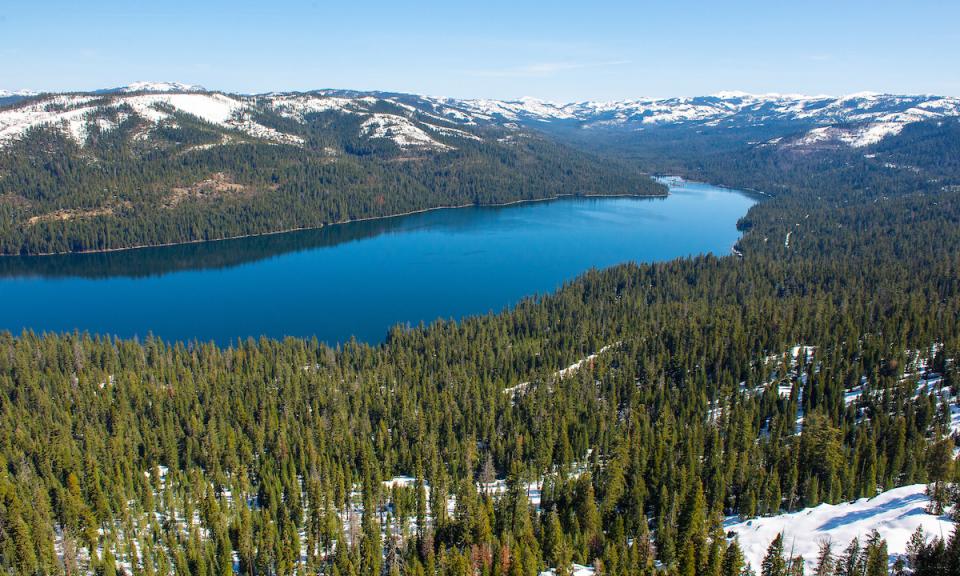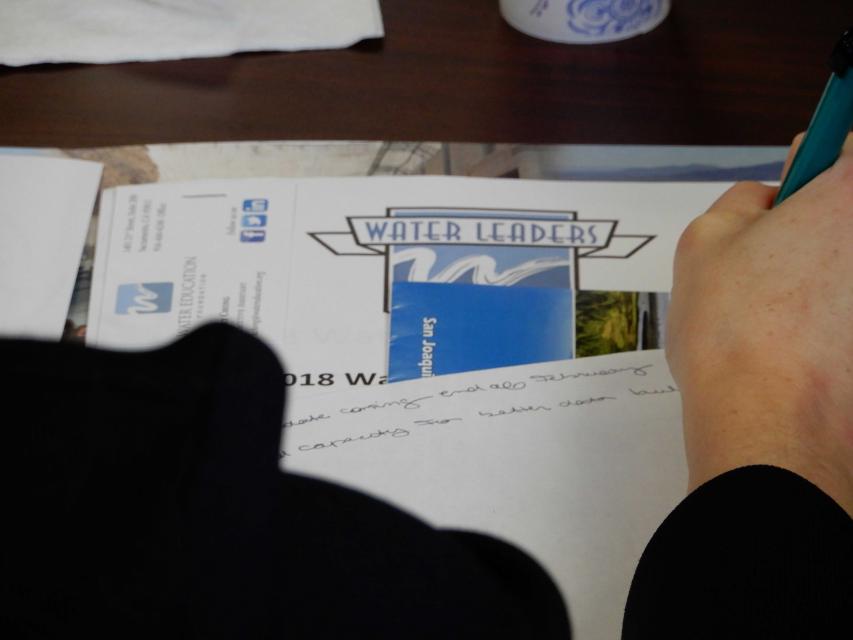WESTERN WATER-As Climate Change Erodes Western Snowpacks, One Watershed Tries A ‘Supershed Approach’ To Shield Its Water Supply
Read our Western Water Spotlight, Water Word of the Day and Five Don't-Miss Water Reads from Across the West
Dear Western Water readers:
 The foundation of California’s water
supply and the catalyst for the state’s 20th century population
and economic growth is cracking. More exactly, it’s
disappearing. Climate change is eroding the mountain
snowpack that has traditionally melted in the spring and summer
to fill rivers and reservoirs across the West. Now, less
precipitation is falling as snow in parts of major mountain
ranges like California’s Sierra Nevada and the Rockies in the
West, and the snow that does land is melting faster and earlier
due to warming temperatures.
The foundation of California’s water
supply and the catalyst for the state’s 20th century population
and economic growth is cracking. More exactly, it’s
disappearing. Climate change is eroding the mountain
snowpack that has traditionally melted in the spring and summer
to fill rivers and reservoirs across the West. Now, less
precipitation is falling as snow in parts of major mountain
ranges like California’s Sierra Nevada and the Rockies in the
West, and the snow that does land is melting faster and earlier
due to warming temperatures.
Hoping to get ahead of that dismal forecast, managers of a major Sierra Nevada watershed east of Sacramento are replumbing their water systems to better handle bursts of rain instead of trickling snowmelt. Their “Supershed Approach” to replace the loss of the once-reliable snowmelt is being touted as a possible model for other Western watersheds that are expected to experience stronger, more frequent snow droughts.
The latest Western Water article explores the “Supershed Approach” and how managers in the American River watershed are attempting to augment infrastructure that was designed for a different climate. Read the full story here.
Water Around the West
Five don’t-miss articles from California and across the West:
California is supposed to enter a wet season. More drought is forecast. Writing for the Washington Post, Diana Leonard explains how California could be headed into uncharted drought territory if the Sierra Nevada and Colorado River Basin both come up dry for a fourth straight winter.
Higher prices for ketchup and spaghetti sauce? California’s drought is hurting tomato farmers: Chase DiFeliciantonio of the San Francisco Chronicle describes how tomato farmers in a usually water-rich region weren’t allocated surface water this year and yields of the important vegetable crop are suffering as a result.
If You Don’t Already Live in a Sponge City, You Will Soon: Wired’s Matt Simon examines the push in cities like Los Angeles to build more green spaces and spreading grounds to better absorb stormwater runoff.
Endangered species found in Central California creek for first time after dam removal: Juvenile coho salmon and steelhead trout have returned above the site of a former dam in the Santa Cruz mountains faster than ecologists expected, writes SF Gate’s Amanda Bartlett.
Colorado to reuse water for drinking, creating new supply: Colorado may turn to direct potable reuse — the process of treating sewage and sending it directly to taps for drinking and cooking — to stretch its drought-ridden water supply, reports Brittany Peterson for the Associated Press.
Water Word of the Day
 A watershed or river basin is
the land area that drains runoff – snowmelt and rain – into a
connected system of lakes, streams, rivers and other
waterways. Some of California’s key source watersheds include the
Sacramento River, the San Joaquin River, the Tulare Lake Basin
and the Santa Ana River. Watersheds provide water used for
drinking and growing crops, so protecting them from pollutants,
trash, wildfires and overdevelopment is critical to the state’s
water supply. Furthermore, clean watersheds are directly
connected to the health of aquatic ecosystems and other dependent
wildlife. For more, check out the Watershed entry in
Aquapedia, our
free online water encyclopedia.
A watershed or river basin is
the land area that drains runoff – snowmelt and rain – into a
connected system of lakes, streams, rivers and other
waterways. Some of California’s key source watersheds include the
Sacramento River, the San Joaquin River, the Tulare Lake Basin
and the Santa Ana River. Watersheds provide water used for
drinking and growing crops, so protecting them from pollutants,
trash, wildfires and overdevelopment is critical to the state’s
water supply. Furthermore, clean watersheds are directly
connected to the health of aquatic ecosystems and other dependent
wildlife. For more, check out the Watershed entry in
Aquapedia, our
free online water encyclopedia.
At the Foundation
 Applications are now open for
our highly competitive, year-long California Water Leaders
program. The program is aimed at emerging
leaders involved with water whether they are attorneys,
engineers, farmers, environmentalists, scientists, planners or
communication specialists. The program is open to those who work
for federal or state agencies, local water and irrigation
districts or private businesses that are involved in
water. Sign
up here to join a 30-minute Q&A session
on Nov. 9 with Executive Director Jenn Bowles, who will
provide an overview of the program and tips on how to submit a
good application.
Applications are now open for
our highly competitive, year-long California Water Leaders
program. The program is aimed at emerging
leaders involved with water whether they are attorneys,
engineers, farmers, environmentalists, scientists, planners or
communication specialists. The program is open to those who work
for federal or state agencies, local water and irrigation
districts or private businesses that are involved in
water. Sign
up here to join a 30-minute Q&A session
on Nov. 9 with Executive Director Jenn Bowles, who will
provide an overview of the program and tips on how to submit a
good application.
Water Academy
 With the ability to shift snowmelt
hundreds of miles south through valleys and over mountains,
California’s interconnected water delivery system is one of the
world’s most productive. The complex system is responsible for
fueling decades of population growth as well as a $50 billion
agricultural sector. Our most popular product, the California Water
Map, highlights California’s main water features
including natural waterways, aqueducts, the Sacramento-San
Joaquin Delta, the Colorado River and more.
With the ability to shift snowmelt
hundreds of miles south through valleys and over mountains,
California’s interconnected water delivery system is one of the
world’s most productive. The complex system is responsible for
fueling decades of population growth as well as a $50 billion
agricultural sector. Our most popular product, the California Water
Map, highlights California’s main water features
including natural waterways, aqueducts, the Sacramento-San
Joaquin Delta, the Colorado River and more.








